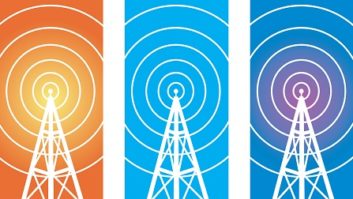The Fast-changing Media Landscape
Apr 1, 2012 1:00 AM, By Marlee Rosen
Broadcasters, agencies and media planners want to manage different kinds of data across multiple devices. The media industry has grown up with single sources – Arbitron for radio; comScore and AdsWizz for digital; Nielsen for the U.S., BARB for the U.K., etc. Today the media landscape has become very disjointed and too wide-ranging to let any single source of data do all the work.
In today’s rapidly evolving media world, the measurement business encompasses two varied game changers. On one side, you have the companies that gather the numbers on every channel; on the other side you have the digital service providers, the management software and cross channel analysis technologies. The latter are touting their holistic interfaces, sophisticated planning tools, and analytics software that enable planners the ability to integrate all the varied data sources into one all-encompassing view.
The measurement landscape
Measurement obviously is only as good as its ability to understand the media universe that it’s measuring. Broadcasters and media planners alike have come to understand there is a lot more to measurement than numbers. AdsWizz, which provides the digital audio industry’s CDNs, ad networks, advertisers, and online audio publishers with ad serving and audience measurement technologies, has invested a lot in understanding how and what technology is being used in digital radio with regards to how the different parts fit together as a whole to provide a holistic, overarching view.
Rich Broadcasting, a fairly new broadcast group specializing in small-market radio is led by 30-year-veteran of the radio business, Richard Mecham. During the establishment of its broadcast group, the company was early to leverage technologies from AdsWizz and Liquid Compass. In a recent interview with the head of Rich Broadcasting, Josh Tielor, it became quickly clear that the company’s vision is to use the latest in digital audio technology and measurement capabilities to service the Rocky Mountain region.
Rich Broadcasting wants to make the most of real-time, actionable analytics on its digital listenership. Advanced metrics within the AdsWizz platform provide detailed analysis of listener figures. Content providers can assess their ROI using the insight gathered from audience habits in which the content providers can report these figures to sponsors and supporters. Viewer and listener analysis is the first step to intelligently monetizing streaming media. Today the solution powers advertising in a number of forms: pre-roll, post-roll, mid-roll, overlay interactive overlay and RSS scroller. It enables broadcasters to replace FM adverts with Internet adverts (national or local) and target advertising on the basis of time and day of the week, location, player or device, demographics or any other user data. It also facilitates contextual advertising, based on events within the stream.
Nielsen and Arbitron, popular radio measurement services, are looking at terrestrial or satellite radio, and are taking into consideration Pandora. It used to be that digital media planners had apples-to-oranges comparisons when trying to include Pandora as part of radio budgets. Now with up and coming players like AdsWizz and Target Spot, the game is shifting. Arbitron’s recent endeavors show commitment to next gen online ratings solutions that this time around will allow both traditional radio stations and pure-play Internet companies the ability to measure listeners in. Additionally, session-based measurement is finally offering more than just estimates.
The analysts’ predictions
According to Frost and Sullivan Research Analyst Krishna Jayaramant, “If measurement doesn’t keep up with the different modes that each media channel takes, then something’s amiss. The onus of fixing this situation will have to involve Arbitron and Nielsen and any other measurement service as well as the technologies that help media planners make use of the data that other businesses have gathered.”
Now that there are two radio sectors – the old terrestrial kind and the new digital one – measurement service companies need to make good on their responsibility to digital radio. What that entails is a paradigm shift including the measuring of both segments of radio and doing it equally well.
– continued on page 2
The Fast-changing Media Landscape
Apr 1, 2012 1:00 AM, By Marlee Rosen
To compete with the likes of Nielsen in the multi-screen sphere, analysts agree that Arbitron will have to strengthen its Internet measurement capabilities and to a lesser degree, mobile. For Arbitron, we have started to see the measurement evolution for radio starting with its purchase of Zokem, a mobile audience measurement and analytics firm, and then shortly afterwards in October 2011, the announcement of a partnership with AdsWizz. The idea behind it was to tap into the streaming audio measurement business. The objective was to collect streaming audio listening data by using server-based metrics and process the server-based streaming log file for its planned digital radio service.
Three years prior, Arbitron quietly got out of the streaming radio ratings business and ended its relationship with comScore. AdsWizz, the new contender in the United States, will be processing for radio broadcast and digital music service customers’ server-based streaming log files for digital radio services and provide standard reporting metrics for over the air and digital streaming audiences. Once Arbitron has enough streaming data to work with, it will be better informed to make decisions about combining Web listening with radio PPM and diary data.
Cross-platform solutions
The new mantra is cross-platform data. Cross-platform solutions provide an opportunity to develop a second significant revenue stream. Both stations and advertisers want cross-platform measurement in order to measure and reach all listeners using all devices. According to Paul Krasinski, Arbitron SVP of digital media and analytics, “It’s all about audio consumption, not just radio versus digital.” He cited at a recent Arbitron customer conference that some 89 percent of those who listen online also listen to over-the-air radio.
The industry is gearing up for better approaches to measuring the increasing Internet radio consumption especially with the increase of usage across several industry verticals (automotive, smart appliances, consumer electronics, etc.). For instance, just within the last two years, the Internet era and in-vehicle connectivity concepts have made their way to Internet radio. Pandora and Last.fm are some of the Internet radio providers who have been prominent players in this area. Similarly, due to the popularity of smartphones, service providers are providing radio as smartphone apps. According to Frost and Sullivan, Pandora has 100 million registered users and 36 million active monthly users. Partnerships with Ford, BMW, Mercedes Benz, and Scion have pulled Pandora out of its box and into spotlight and there is no turning back.
AdsWizz President Alexis van de Wyer agrees that while next gen audio technologies are enhancing and personalizing the radio experience, next gen ad serving and measurement technologies are enabling advertisers to reach their target demographics more effectively through personalizing the ads as well. Nowadays, Web radio audiences consume through Internet-enabled devices and have created new opportunities for broadcasters, agencies and advertising networks to monetize their online radio audiences.
Monetizing audiences
Companies are beginning to tap into how they can better monetize their audiences, give advertisers new powerful ways to interact with consumers and provide more effective ad strategies to reach multi-platform consumers. ESPN for instance had Arbitron create custom measurement of all listening and viewing on all platforms. Arbitron is using online measurement with AdsWizz. According to Glenn Enoch, vice president of Integrated Research for ESPN, “We want to know how many people listen and view ESPN, how often they do so and for how long. The more key audio listening data we can gather, the better.”
Slacker Radio, rivaling Pandora with its highly personalized radio services, gives us another example of a leading company looking to further monetize its audience through video advertising partnered with ad manager YuMe. Slacker Radio will use an ad serving platform to insert ads across multiple devices and will sell its own ads. Today banner ads appear on Slacker, which also operates a free of charge model as well as a fully loaded subscription model. With video cost per mile running strong against premium content and a large audience that creates a great monetizing opportunity, video ads are a natural for Slacker as long as it can balance user experience considerations.
– continued on page 3
The Fast-changing Media Landscape
Apr 1, 2012 1:00 AM, By Marlee Rosen
Ooyala Technology, well known for its online video technology has partnered with Adap.tv and AdsWizz to expand opportunities for its clients to monetize content, integrated its video technology into ESPN’s website partners with the sports media behemoth’s streaming video content. ESPN has been able to step up its load times and increase playback quality. Sports broadcasters can now better utilize internal resources by streamlining the management of their videos and related data. Ooyala provides a real-time analytics engine, with detailed per-video and per-user reporting for on-demand and live video streaming, as well as integrations with payment systems so there is the ability to launch both paid and ad-supported video business models.
ESPN has generally lagged behind its big media competitors in terms of its utilization of social media, so the fact that Ooyala enables visitors to easily share videos via Facebook and Twitter from within the player has been a tremendous social boost for ESPN.
Market trends
According to Red Bee Media CTO Brian Levy’s predictions, the next few years will evolve in the many ways such as going from using many screens to having one integrated screen. There will be enhanced personalization going from the electronics program guides (EPG) set by the industry to a more personal EPG where the user is in charge, and lastly greater interactivity that will enable all sorts of new ways for the consumer to interact with the material. He also expects there will be a larger convergence of media. Expect new value chains and logistics providers to emerge. “It will be an ecosystem where partnerships are essential, and where technology simplification – creating an outstanding user experience and customer interaction and evolution – are the important elements of success,” Levy said.
For the future, expect to see more strategic media technology partnerships embraced that will make Internet radio even more accessible to advertisers by dealing with various issues such as scheduling, customer service and performance reporting. Advances in performance reporting capabilities (i.e. data describing click-through rates on banner display ads that have been synced to the audio message) will allow broadcasters to set up multiple radio channels and deliver ads across one or all of them, targeting audiences by demographic characteristics. Technology enhancement offerings are expanding with online video, social networking and mobile functionality.
Rosen is a market research analyst with Rosen Associates, Westborough, MA.
April 2012
Audio over IP for remotes, Radio Kansas rebuilds, the FCC rules on translators and LPFM, and Field Reports on the Inovonics INOmini 632 and Nautel NV40….










